La luna al Guinzaglio Go&See #1
Objective: meeting one of the key partners of the Luna al guinzaglio proposal for Matera 2019, that is to say the Mediterranean expedition that will arrive in Favara, in the province of Agrigento, on 26th August, to support the Farm Cultural Park, an urban regeneration project that is facing a critical period within the local government.
It is the right time to explore a territory where contemporary art will be used to regenerate the entire inhabited centres, spoilt by illegal building, worsened by catastrophic events. A typical example: Gibellina Nuova. After the earthquake in Belìce, the small town has been well known for the reconstruction of an open-air artistic park whose works of art are closely related to the Museum of the Mediterranean Wefts.
25th August: Potenza-Favara on the road
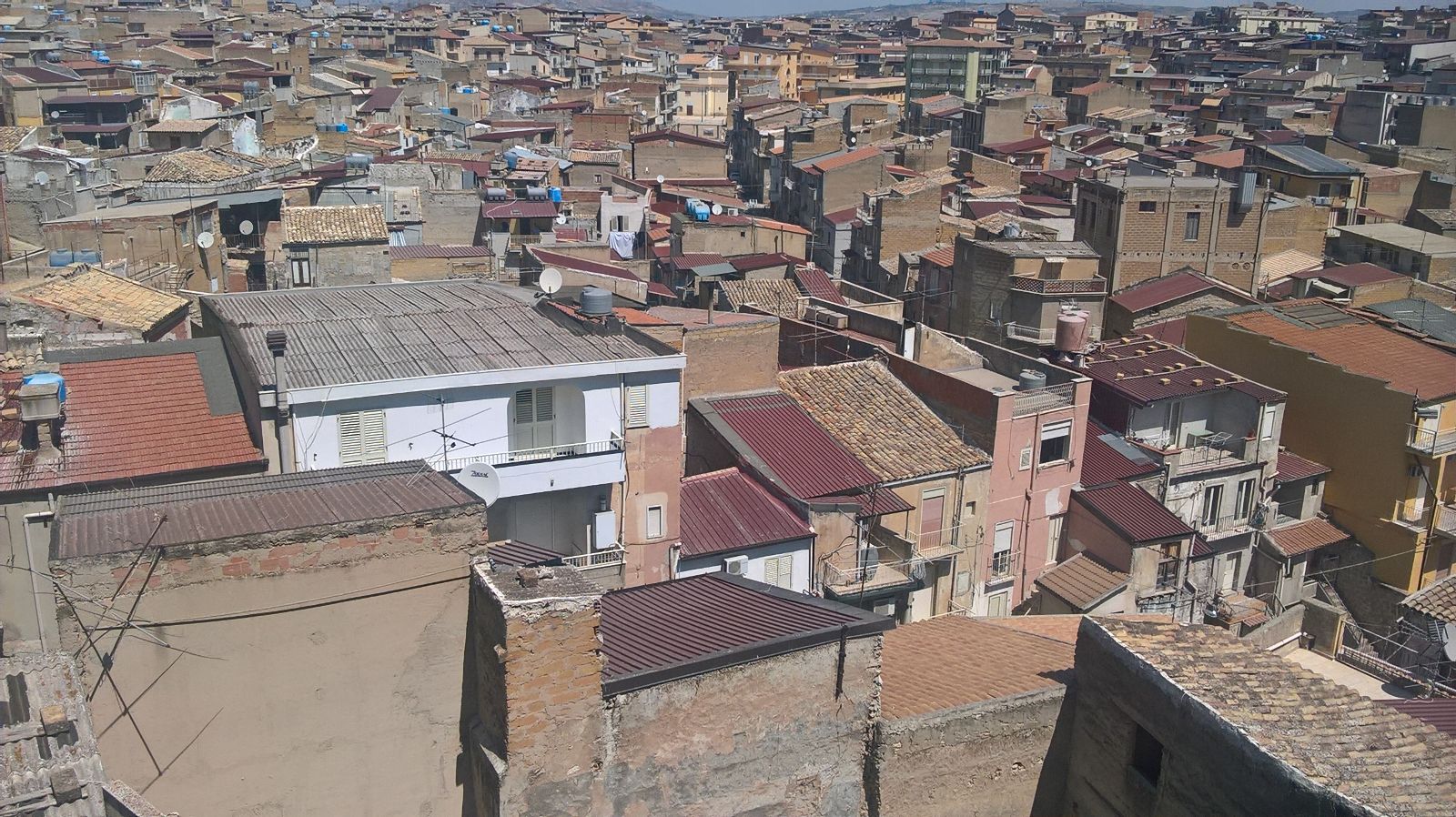
The Salerno-Reggio Calabria highway is now beautiful and easy to be driven across, thus letting people enjoy the night journey to Sicily with the sunset on the nice, hot and red sea. Almost nobody is taking the ferry boat to Messina late at night, the air is mild and after half- an- hour ferry boat the challenge starts: we arrive in Favara on time for the midnight check-in at the Community, that is the B&B inside the Farm Cultural Park.
But Gaetano, who is the owner of the B&B, already knows that in the darkness, the road will not meet the expectations.
We arrive in Favara at night,we are exhausted, we do not seize immediately the greatness of the site, but even in tourist accomodations you can ‘live’ design everywhere, which highlights mass architecture in a pleasant cosmopolitan contrast.
26th August: Mediterranean at the Farm Cultural Park
Designed by Andrea Bartoli and Florinda Saieva back in 2010, the cultural park was built in order to make art revitalise a territory affected by a high percentage of delinquency and illegal building. Thanks to this project it was possible to import good practices from all over the world, thus getting inspired by containers of International contemporary art, rather than by districts built in the big worldwide capitals where it is possible to find manufactured products, food from all over the world and innovative experiences.
A regenerated inhabited district that develops in 7 courtyards with a Moroccan garden, a social kitchen, a co-working space, a gallery for temporary exhibitions, a school of architecture for children, several spaces where to drink and eat, tourist accomodations managed by the buildings’ owners who started their business within the framework of the regeneration project.
It looks like a gallery-district where every year artists, architects and the creative community are invited to replace the installations and the works of the continuously developing collection.
It looks like a big machine that requires a huge effort and that involves most of the community directly or indirectly.
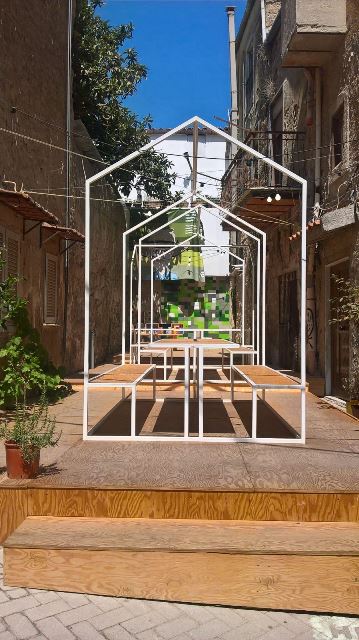
The positive effect of the project can be immediately noticed wandering around the town, starting from the Castle that hosts temporary exhibitions in compliance with the schedule of the Farm. The aesthetic contamination can be noticed in the urban furnishings of gardens, benches, signs etc. It seems that some other activities and places might have been contaminated by this innovative atmosphere: the Museo della Mandorla (Museum of the Almond) - that unfortunately is shut down but a glimpse of it can be caught from the windows - restaurants with tables in the yards and street art on the walls, unique corners standing out among the run-down lanes and pervasive incomplete buildings!
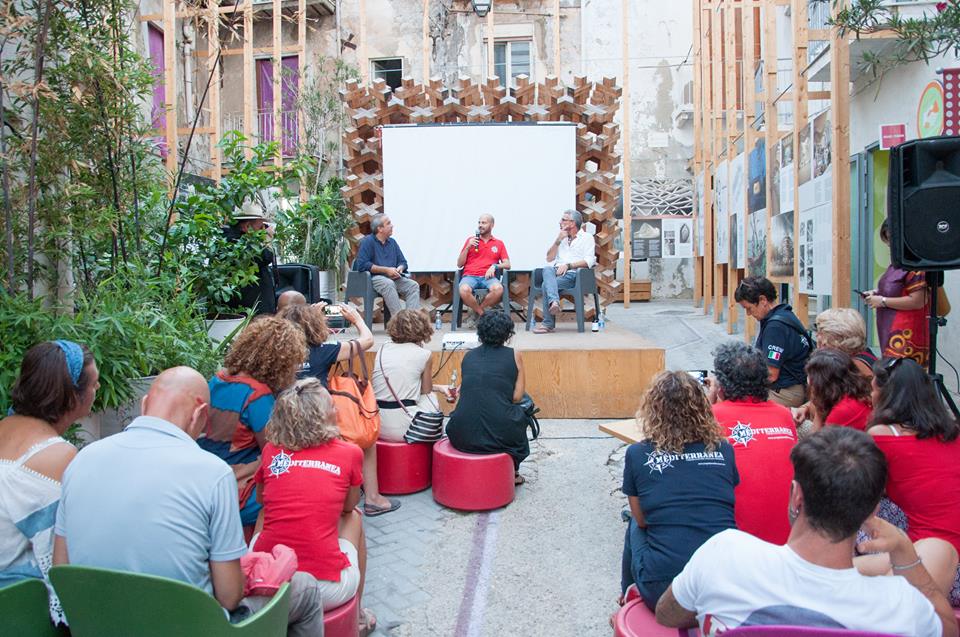
In the evening the expedition Mediterranea organizes an unscheduled event at the Farm Cultural Park to raise the interest in the project by comparing the two realities that are putting their efforts to change difficult situations.
Mediterranea is an expedition that was founded in 2014 by a group of people sharing the passion for sailing and the wish of using the energy of a boat in a mission aiming to let people know the other Mediterranean countries, to build peace bridges and to offer a tool to carry out scientific research, like the study on plastic wastes in the water. It is a project open to new collaborations. On the way to Favara, we decide to stop at Porto Empedocle, even if it was not planned because for La luna al guinzaglio it was an opportunity to meet the partner with whom we worked out the proposal for Matera 2019 within the framework of “Coast to Coast”.
The dialogue between Simone Perotti, writer, sailor, designer, heart and soul of Mediterranea, and Andrea Bartoli, founder and artistic director of Farm, opens a public debate on the importance of long-term planning like this one and on the need of having visionaries who can look towards new development opportunities and community prospects.
At the end of the event, we meet Francesca Piro, sailor and President of Mediterranea together with Simone Perotti, to discuss about next year’s projects and organize an inspection on the boat. 2018 expedition has to be completely organized because the captain and the crew must be identified. Every year the crew alternates the founders with the project’s partners. However, we have already decided which countries we are going to, such as: Tunisia, Morocco, the Strait of Gibraltar and Portugal. “In October we will plan other activities”, Mr. Perotti concludes and puts off a more operative meeting with Francesca to the following day.
The evening goes by very fast until late at night. Tasting a small rice croquette and an artisanal beer, we visit all the spaces and every corner of the gallery with the electro-soft dj-set. We are surprised to see the huge quantity of people strolling down the narrow streets of the Farm and the absolute transversality, despite the most popular festival of the village is underway in the central square! Groups of youngsters, families and couples of adults stroll down and mix with young people and people looking for an alternative evening, while a film on the street art in Grottaglie is projected and followed by an interesting debate on the creator, thought-provoker, art dealer and internationally-lauded artist: Angelo Milano, tag Momo.
27th August: The Museum of Mediterranean Weft in Gibellina and Mediterranea in Sciacca
At breakfast the President of Mediterranea explains to us thoroughly the 2018 programme of the expedition, highlighting any unexpected events, presenting the local interlocutors, like the Institutes of Culture, Embassies and Port authorities that are usually involved to start planning meetings, research and events.
After scheduling the next dates, an inspection of the boat is carried out at the Porto of Sciacca where it is tied up at the dock.
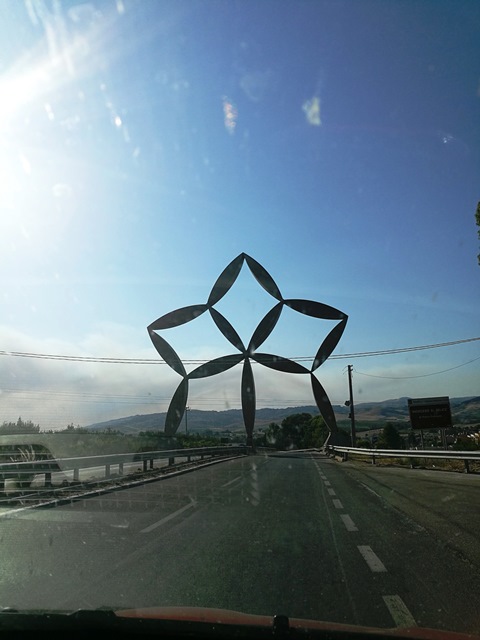
In the meantime, turning and heading towards west, La luna al guinzaglio continues up to Gibellina, where it discovers a town that is the symbol of the post-earthquake regeneration hosting the Museum of the Mediterranean Wefts.
Favara is 120 km away from Gibellina, that is two-hour drive through contrasting landscapes.
The degradation caused by illegal building is replaced by the beauty of the Valley of the Temples and of the coast.
Driving northwards on Sunday afternoon we can see an arid and dormant landscape and Gibellina Nuova looks surreal, among impressive incomplete and complete monuments whose value is unknown to the most!
All is quiet, while the big works of art display a recent past to the foreigners, a past that has marked history only in the art textbooks, without giving way to a better future for the community.
This place is a true open air museum, where Ludovico Quaroni built the Mother Church with the shapes of a suburban planetarium, Consagra built a big portal at the entrance to the town and an incomplete theatre, Mendini built the Civic Tower-Carillon, Accardi decorated entire walls with hand-painted local ceramics.
We drive through the town to admire the art in the street. We do not have enough time to arrive at the old town of Gibellina where Burri turned the ruins of the town erased by the earthquake of Belice into a permanent memorial known as the “Cretto gigante”, one of the world’s biggest land art works. After the earthquake of 1968 Gibellina was rebuilt near the motorway, on the lands of a mafia family. The mayor at the time invited the most important artists and Gibellina started to be mentioned in the textbooks of contemporary history of art but its reputation stopped there.
The Foundation Orestiadi deals with interesting activities. It organizes the festival of the theatre and international music that can boast big settings like the huge cretto by the master from Città di Castello and promoted the Museum of Mediterranean Wefts, that celebrates Sicily as the outpost in the exchanges between Greece, Middle East and Africa.
We are interested in craft works and works of art that mix and convey the know-how of remote places. The famous artists who are included in the exhibition raise the expectations. In fact, the great work by the Stalkers in primis, “Tappeto volante” does not disappoint them: stalactites made of ropes with copper ends make up a suspended sky and devise a travelling place, where stillness mingles with movement. The installation is the result of a multicultural lab aimed at redesigning the wooden ceiling of the Cappella Palatina in Palermo, a manual activity which can involve everyone in the research on the Iranic origins of the building that has been implemented within the travelling exhibition “L’Islam in Sicilia”.
The collection of impressive and unique installations is a proof of the time spent in Gibellina by artists like Boetti, Pomodoro, Isgrò and Accardi. We cannot but mention the impressive view of the “Montagna di sale” by Paladino, in which the power of the black horses sucked by the whiteness of the salt is thrown towards the dry landscape beneath the impassive sky.
Unfortunately, the remaining works and artifacts in the exhibition disperse this great energy. Paintings, sculptures, artifacts, handicrafts, traditional textiles and costumes are exhibited mixing them up along a completely confusing space-time; moreover, they are blurred by the neglected settings, which sometimes are almost kitch!
The attempt to put everything together hasn’t been very successful. It is clear that adding new luster to this great treasure has been necessary, as the closure of the seat of the Foundation in Tunis some years ago shows.
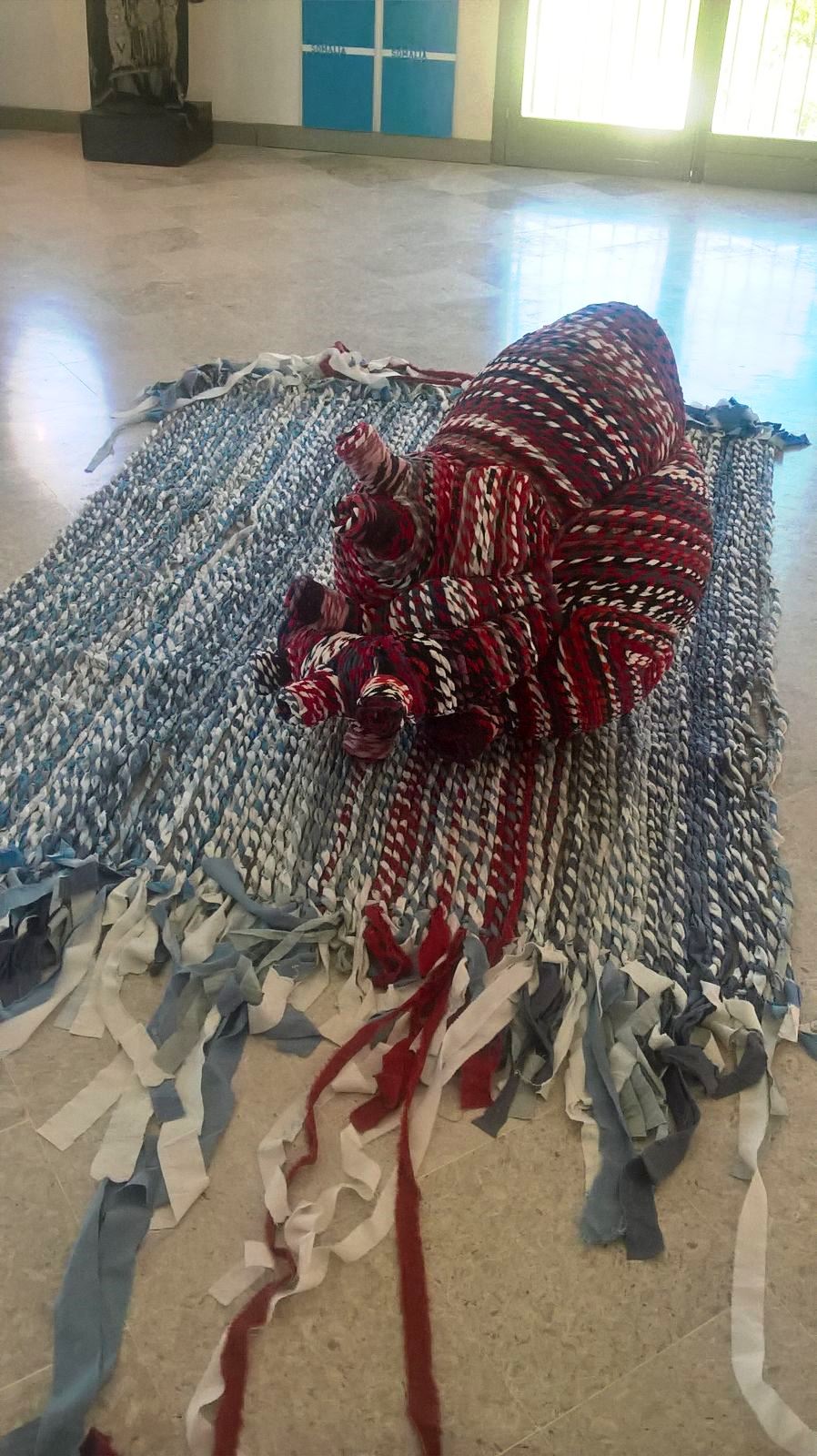
Therefore, we set off for Sciacca, our mind full of visions.
We are going to visit the only sailing boat arriving at the port tonight. We arrive at the same time as the 17-metre blue and white sailing boat that manoeuvres and ties up at the dock. Simone Perotti helps us get on the boat to introduce us to the crew and show us the spaces that 14 people have been sharing for three years during this expedition in the Mediterranean Sea.
A masterpiece of wooden joints and details with all the necessary stuff to live together, to read, to discuss, to study and to relax. Cabins and control boards are located together with cupboards, a small library, a table for everyone and the plotter to display the routes on the maps.
At last we are on the vessel that will spread the wings of our imagination wide, from Basilicata to the Mediterranean.
La luna al guinzaglio is ready!
The new captain will join the crew in October. We have to wait!
After a relaxing stop over in Catania, where new and old friends welcome us, we are ready to go back to Basilicata.





